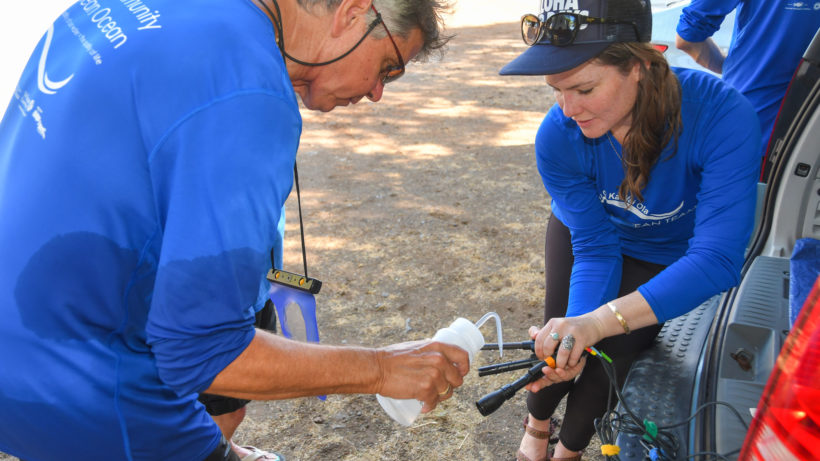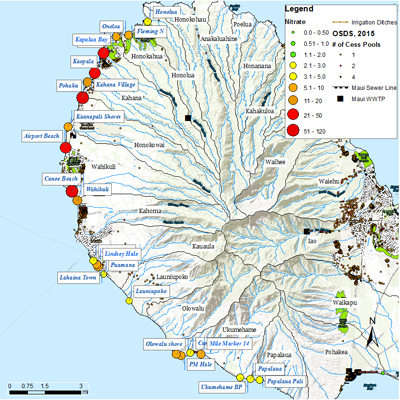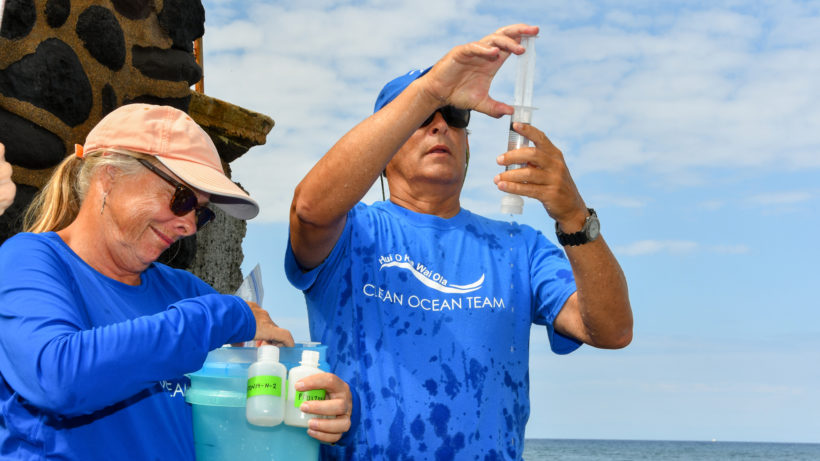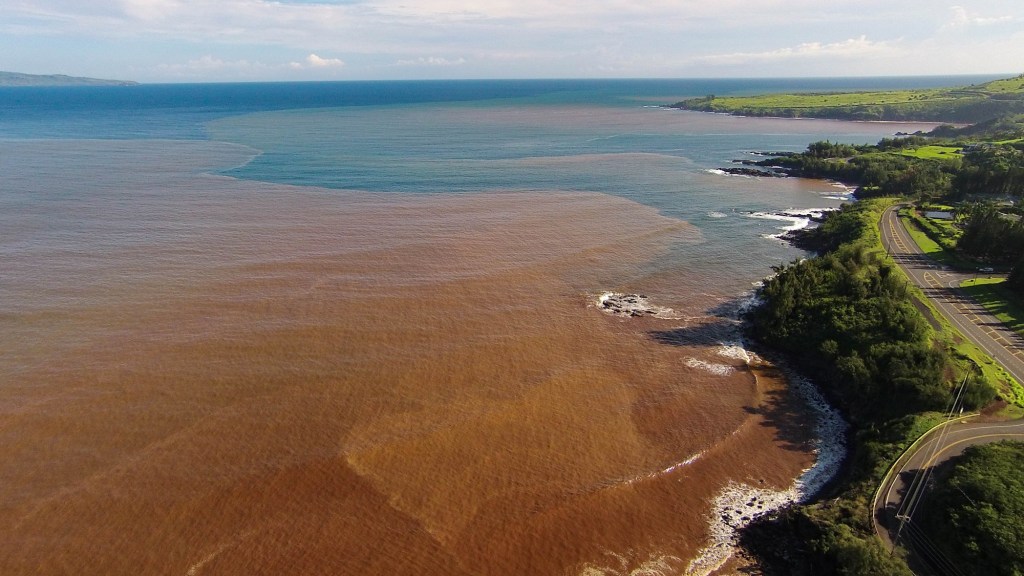“In Hawai‘i, the ocean feeds us, literally, emotionally and spiritually. It’s also the basis for Hawaiʻi’s culture and economy,” says Alana Yurkanin, The Nature Conservancy of Hawai‘i’s Assistant Marine Coordinator who also serves as Communications and Safety Coordinator for the Hui O Ka Wai Ola citizen science project. “Perhaps that’s why so many people embrace the spirit of kuleana, the Hawaiian value of responsibility, to help care for our island home.”
Poor water quality in Hawai‘i’s oceans degrades coral reefs, threatening the corals themselves, the fish and other ocean creatures that rely on them, and the people — from fishers to swimmers and surfers to tour guides — who rely on these ecosystems for their livelihoods and well-being. Hawai‘i’s Department of Health is tasked with monitoring water quality, but has limited resources to conduct monitoring across the island state.
Hui O Ka Wai Ola: Association of the Living Waters
Seeing the need for more extensive monitoring, The Nature Conservancy of Hawai‘i partnered with the Maui Nui Marine Resource Council and the West Maui Ridge 2 Reef Initiative to create Hui O Ka Wai Ola (The Hui), a citizen science water quality monitoring effort. The group collects data using the State of Hawaii Department of Health’s standards. Their data is compiled with that of the Department to provide a better understanding of coastal water conditions on Maui. The compiled data helps resource managers prioritize areas that need urgent attention.
“In Hawaii, 80% of us interact with the ocean on a weekly basis,” Kim Falinski, the Conservancy’s Marine Science Advisor and Quality Assurance Officer for the Hui notes. “The Hui inspires people to get involved.”

A dedicated group of citizen scientists, led by Dana Reed – a volunteer coordinator with a background in electrical engineering – gather water samples from 48 monitoring sites off the coast of Maui. In the labs provided by Lahainaluna High School and NOAA, they analyze samples for nutrients, sediments, and other land-based pollutants that can negatively impact water quality.
“Our volunteers include teachers, parents, chemists, and water quality engineers. They are specialized and dynamic, and they care,” Yurkanin explains. “A lot of people are interested in this issue. It’s hard to ignore plumes of brown murky water that pollute the ocean after a storm, especially when they’re right where you want to go surfing, paddle-boarding, fishing, or swimming.”

Water quality issues aren’t always visible, so testing regularly in a variety of locations allows managers to locate areas of poor water quality and address issues on land, like fertilizer run-off and land clearing, that can affect water quality. Although it’s normal for ocean water to have some sediment and nutrients, dirt from heavy erosion can cause “brown water events” that smother corals, and an excess of nutrients like nitrogen and phosphorus can feed algae, causing it to grow fast and smother coral reefs. Excess nutrients may also cause bioerosion degrading the reef and making the structure more likely to collapse.
Citizen scientists also test the salinity, pH, temperature, and dissolved oxygen in the water, to assess potential impacts related to global issues, like climate change, and local issues, like sewage discharge.
Data from the project can be downloaded or viewed in online maps.
Monitoring Water Quality in Your Neighborhood
Water quality in oceans and in freshwater systems is a global concern. In the United States recent events like algal blooms and the Flint water crisis have raised concerns about water quality and inspired many citizen science projects.

When starting this project, the Conservancy and its Hui partners learned from the National Water Quality Monitoring Council (NWQMC). “NWQMC has been a great resource and supports hundreds of groups like the Hui across the country,” Falinski says enthusiastically. The Hui has been so successful that they have now become a resource for other local groups and are expanding their water quality monitoring efforts across the state.
What do you want your data to look like, what story do you want it to tell? NWQMC can help you figure out where on the spectrum you belong. If you are interested in giving back by joining or starting a water quality monitoring project in your area, check out NWQMC volunteer resources.




Dana,
Sounds like important work.
Elaine
I may be able to raise some funds to purchase equipment for Hui O Ka Wai Ola. Who would I contact to inform about non profit status etc……mahalo. Might also be able to help with short articles keeping awareness up around islands.
Hi Sam, Here is the contact page of the Hui O Ka Wai Ola: https://www.huiokawaiola.com/join-us.html
You can also email: huiokawaiola@gmail.com
Thank you so much for your interest!